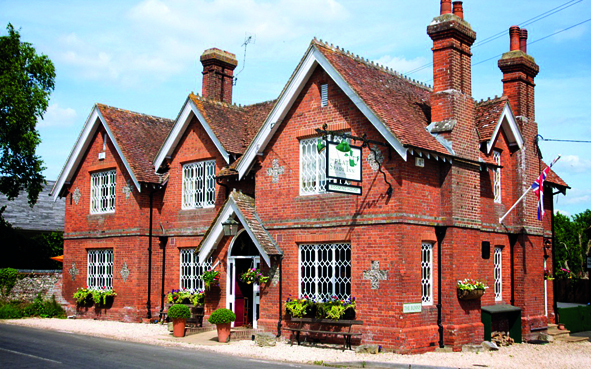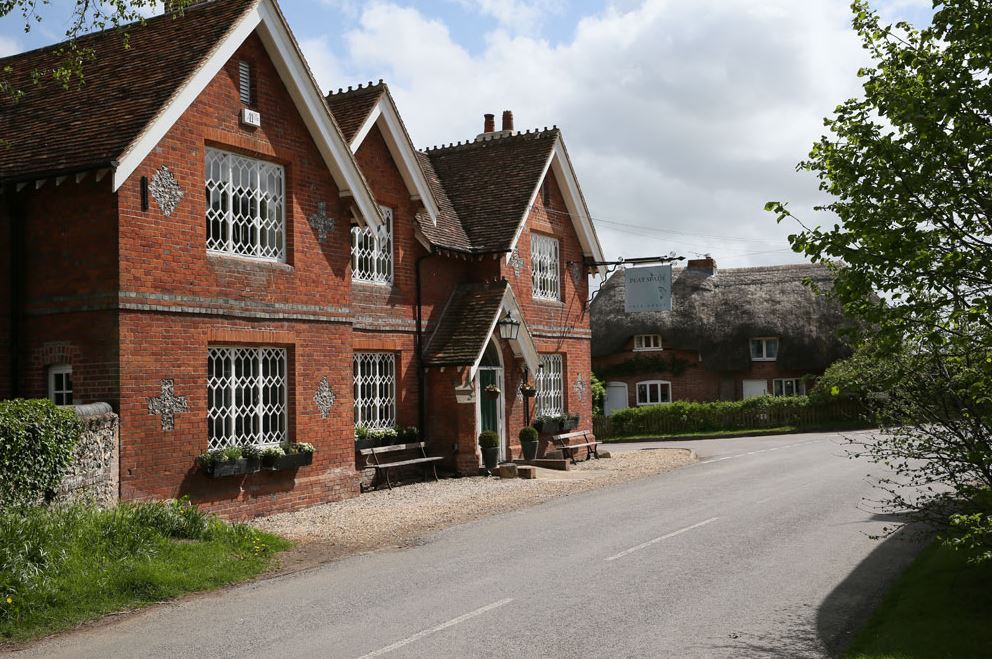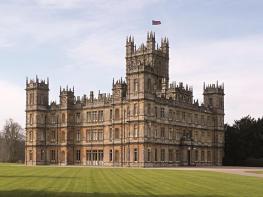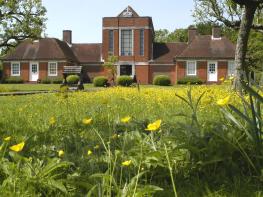Located in the picturesque Hampshire village of Overton, The White Hart is reputedly the oldest…
Whitchurch and the River Test

Combine a stroll through the infant Test Valley, famous for its specialised paper-making mills, with a visit to a working silk mill.
5.5 miles (8.8kms)
About the walk
Whitchurch was first established as a borough and a market town in the 13th century because of its location at a crossing point on the River Test and a junction of two major routes. This small town was at its most important during the coaching era, when it was the first overnight stop out of London. Industry, in the form of mills, flourished in the town and along the Test, utilising the river to provide power before electricity.
The Silk Mill, which straddles the Test, survives and is a splendid example of industrial architecture. Built in 1815 on the site of previous mills, it was used for hand-weaving wool before switching to silk weaving around 1830. You can visit the Silk Mill before or after your walk but it is not the only mill you will see along the route.
Making money
The iron-free water of the infant River Test is ideal for papermaking, notably for the manufacture of watermarked banknote paper, and several local mills grew up to further this industry. Henri Portal, a Huguenot from France, first established his papermaking business at Bere Mill in 1712. It has been a pictureque spot ever since but, alas, much of this weatherboarded mill was destroyed by fire in early 2018 and is currently undergoing renovation.
Portal moved to his new mill at Laverstoke in 1724, where he started making the watermarked paper for banknotes. The brand name of Portals had, and still has, a monopoly in this specialised type of paper and the original contract with the Bank of England survives to this day. The business remained in Laverstoke until 1950, when it moved to a mill in nearby Overton, whichPortals had opened in 1922. The old paper mill now houses another valuablecommodity, the Bombay Sapphire Gin Distillery.
Much of the estate village at Laverstoke was built by Portals for its workers. Look out for the unusual row of half-thatched cottages, built in 1939 in an Arts and Crafts style, and the finely built, ochre-coloured Laverstoke House, built in 1796 for Harry Portal.
Walk directions
Turn right along the Winchester road, then right again at The Weir. Follow the lane past some allotments on the left to one of the many old watermills in this area, Grade II-listed Fulling Mill. Cross the stream and then turn right down the waymarked path to cross the river, and follow the footpath beside the River Test.
At the road, bear sharp left up to All Hallows church and turn right onto Wells Lane. Just before the railway bridge, turn right down Fairclose and continue down the footpath. Turn left at the bottom, towards the village centre. At the mini-roundabout, take the road to the right of The White Hart, to ‘Overton’.
After 0.25 miles (400m), turn right down The Green, the road narrowing to a track by the wooden Moki Lodge. Go through a gate and follow the fenced path along the left-hand edge of water meadows. Bear left through a hedge and follow the right-hand field edge, which soon swings left beside the River Test. Go through a kissing gate, signed ‘Mill Trail’, and bear slightly left across a field to another kissing gate and a metalled drive.
Turn right, cross the bridge beside Bere Mill Cottage and keep left at a fork of footpaths to a gate. Go through, and up to a kissing gate. Bear slightly right across the field to a kissing gate and pass a bench. Keep ahead along the right-hand field boundary, then head right and continue ahead to a kissing gate. Turn left and follow a gravel track to visit St Nicholas’ church.
Leave the churchyard and bear right down a road, following it right over the River Test to the B3400. Cross to the pavement opposite and turn left here, opposite Manor Cottages, and continue for 200yds (183m) for the Watership Down Inn; otherwise turn right and cross the river. Turn right, opposite Laverstoke Mill, along Laverstoke Lane and pass Lady Rose Hall.
As the road starts to bend, turn right along a track, following blue waymarkers (for the Mill Trail). Climb steadily then, as it turns sharp right, bear left alongside a field and follow the field edge left to a gap in the far corner. Pass through a kissing gate into another field, keeping to the left and gradually descend to the gate in the corner, and continue beside the woods to a further gate (ignore the stile to your left).
Keep ahead beneath a steep wooded bank on your left. Go through a wooden gate at a break in the trees and then through a kissing gate. Continue along the right-hand edge of two fields, with the river on your right. Keep ahead through woodland and then beside another field. After leaving the field, bear right in a meadow and pass a wooden seat near the back of the school. Bear left on a metalled footpath, pass the school gate and skirt the playing fields. Follow McFauld Way ahead and turn right opposite Alliston Way along a path beside playing fields and down an alleyway. Cross the road at the bottom to return to the car park.
Additional information
Riverside paths, field-edge paths and road
Town streets and farmland
Keep dogs under control at all times
OS Explorer 144 Basingstoke, Alton & Whitchurch
Car park at Gill Nethercott Centre, next to Whitchurch Silk Mill on Winchester Street
Bell Street, Whitchurch
WALKING IN SAFETY
Read our tips to look after yourself and the environment when following this walk.
Find out more
Also in the area
About the area
Discover Hampshire
Hampshire’s varied landscape of hills and heaths, downlands and forests, valleys and coast is without rival in southern England. Combine these varied landscapes and terrains with secluded and idyllic villages, complete with thatched and timber-framed cottages and Norman churches, elegant Georgian market towns, historic ports and cities, restored canals and ancient abbeys, forts and castles, and you have a county that is paradise for lovers of the great outdoors.
If you’re a walker, stride out across the high, rolling, chalk downland of the north Hampshire ‘highlands’ with far-reaching views, walk through steep, beech-clad ‘hangers’ close to the Sussex border. Or perhaps take a gentler stroll and meander along peaceful paths through unspoilt river valleys, etched by the sparkling trout streams of the Test, Itchen, Avon and Meon. Alternatively, wander across lonely salt marshes and beside fascinating coastal inlets or, perhaps, explore the beautiful medieval forest and heathland of the New Forest, the jewel in Hampshire’s crown.
Nearby stays
Restaurants and Pubs
Nearby experiences
Recommended things to do
Why choose Rated Trips?
Your trusted guide to rated places across the UK
The best coverage
Discover more than 15,000 professionally rated places to stay, eat and visit from across the UK and Ireland.
Quality assured
Choose a place to stay safe in the knowledge that it has been expertly assessed by trained assessors.
Plan your next trip
Search by location or the type of place you're visiting to find your next ideal holiday experience.
Travel inspiration
Read our articles, city guides and recommended things to do for inspiration. We're here to help you explore the UK.















